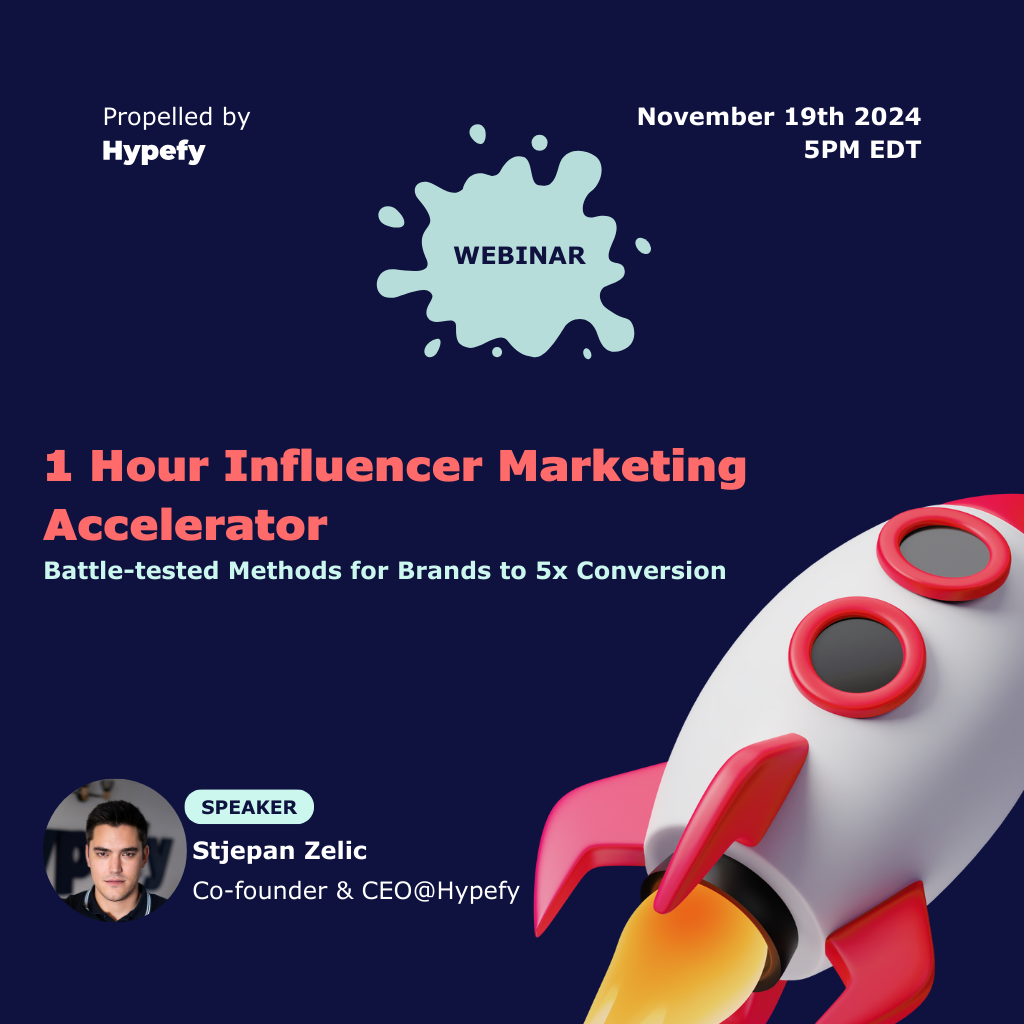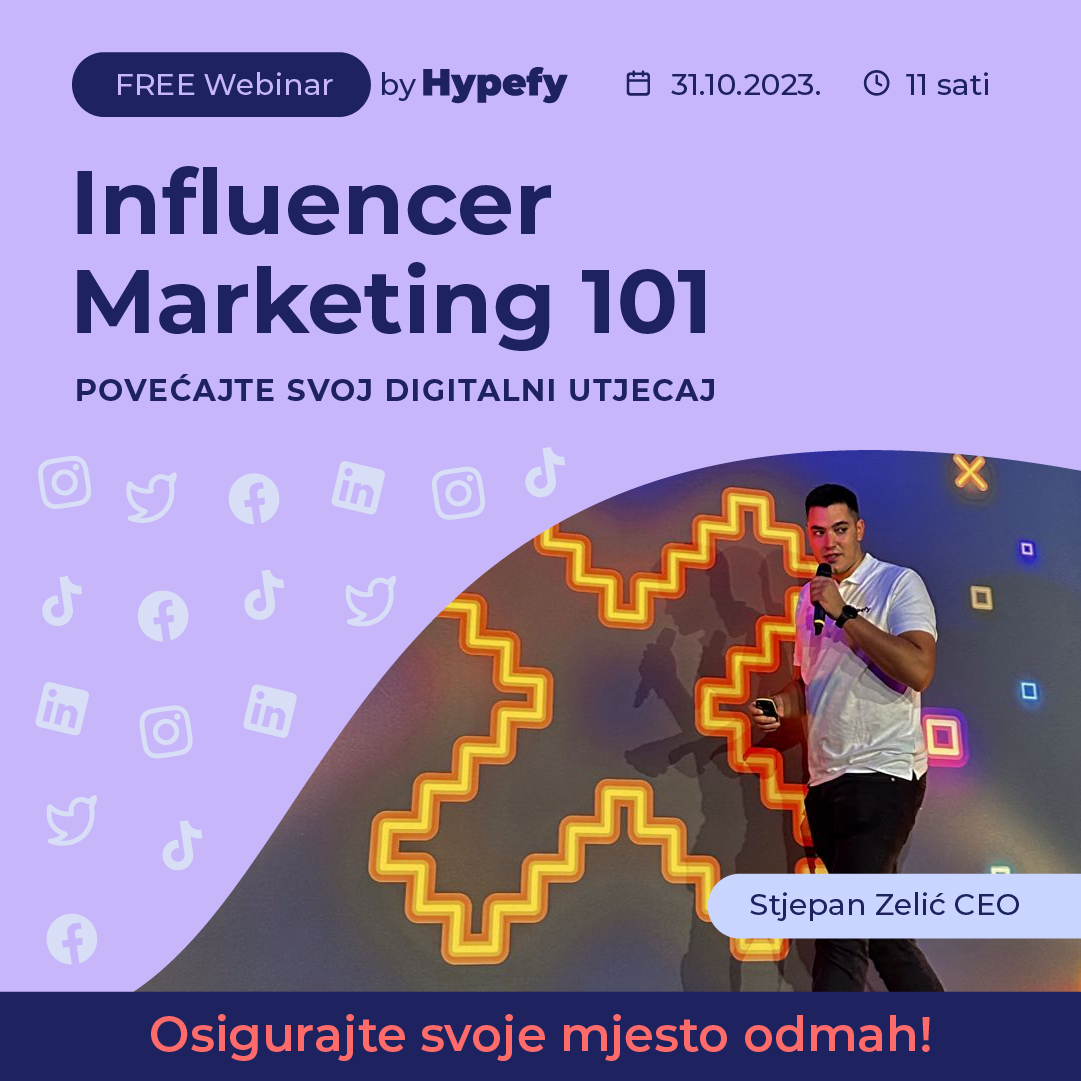Share:
Influencer marketing has become a popular marketing strategy for businesses of all sizes. It involves partnering with individuals who have a significant following on social media platforms to promote a product or service. The goal is to leverage the influencer’s credibility and reach to increase brand awareness and drive sales.
Influencer marketing has become a go-to strategy for many businesses because it can be more effective than traditional advertising methods. Consumers are becoming increasingly skeptical of traditional ads, and they are more likely to trust recommendations from people they know or follow on social media. Influencers can help bridge the gap between brands and consumers by providing authentic and relatable content that resonates with their followers.
However, influencer marketing is not without its challenges. One of the most significant challenges is finding the right influencers to partner with. Businesses need to identify influencers who align with their brand values and have an engaged following that is relevant to their target audience. Additionally, there are ethical considerations to take into account, such as transparency and disclosure requirements. Despite these challenges, influencer marketing can be a valuable tool for businesses looking to reach new audiences and increase sales.
IN THIS ARTICLE
Understanding Influencer Marketing
Influencer marketing is a type of social media marketing that involves endorsements and product placements from people who have a large following on social media. These individuals, known as influencers, are typically experts in their respective fields and have a significant impact on their followers’ purchasing decisions.
Influencer marketing has become increasingly popular over the years as social media platforms have grown in popularity. Brands are now able to connect with influencers who have a following that aligns with their target audience and leverage their influence to promote their products or services.
One of the benefits of influencer marketing is that it allows brands to reach a highly targeted audience. By partnering with an influencer who has a following that aligns with their target audience, brands can ensure that their message is reaching the right people.
Another benefit of influencer marketing is that it can be more cost-effective than traditional forms of advertising. Instead of spending a large amount of money on a television or print ad, brands can partner with an influencer who has a following that aligns with their target audience and reach a highly engaged audience at a fraction of the cost.
However, it’s important to note that influencer marketing is not without its challenges. One of the biggest challenges is ensuring that the influencer’s content is authentic and aligns with the brand’s values. Brands must also ensure that they are complying with advertising regulations and disclosing any sponsored content.
Overall, influencer marketing can be a highly effective way for brands to reach their target audience and increase brand awareness. By partnering with the right influencers and creating authentic content, brands can leverage the power of social media to drive sales and grow their business.
Types of Influencer Marketing
Influencer marketing is a popular marketing strategy that involves partnering with individuals who have a large following on social media to promote a brand or product. There are different types of influencers that brands can work with, each with their own unique benefits. Here are some of the most common types of influencer marketing:
Macro Influencers
Macro influencers are individuals who have a large following on social media, typically over 100,000 followers. They are often celebrities, industry experts, or social media stars who have built a strong reputation and following online. Macro influencers can be a great choice for brands looking to reach a wide audience and increase brand awareness. However, they can also be expensive to work with and may not have as high engagement rates as smaller influencers.
Micro Influencers
Micro influencers are individuals who have a smaller following on social media, typically between 10,000 and 100,000 followers. They are often experts in a specific niche and have a highly engaged audience. Micro influencers can be a great choice for brands looking to reach a specific target audience and drive conversions. They are often more affordable than macro influencers and can have higher engagement rates.
Nano Influencers
Nano influencers are individuals who have a smaller following on social media, typically between 1,000 and 10,000 followers. They are often everyday people who have built a following based on their hobbies, interests, or lifestyle. Nano influencers can be a great choice for brands looking to reach a highly engaged and authentic audience. They are often more affordable than larger influencers and can have higher engagement rates.
Celebrity Influencers
Celebrity influencers are individuals who are well-known in the entertainment industry, such as actors, musicians, or athletes. They often have a large following on social media and can be a great choice for brands looking to reach a wide audience. However, celebrity influencers can be expensive to work with and may not have as high engagement rates as smaller influencers.
Overall, there are many different types of influencer marketing that brands can use to reach their target audience. By understanding the different types of influencers available, brands can choose the best influencer marketing strategy for their needs and budget.
Benefits of Influencer Marketing
Influencer marketing has become an increasingly popular way for brands to reach their target audience. Here are some of the benefits of using influencer marketing:
Brand Awareness
One of the main benefits of influencer marketing is that it can help increase brand awareness. By partnering with influencers who have a large following, brands can reach a wider audience than they might be able to on their own. This can help increase brand recognition and familiarity, which can lead to increased sales and customer loyalty.
Audience Engagement
Influencer marketing can also help brands engage with their target audience in a more meaningful way. Influencers have built a relationship with their followers, and by partnering with them, brands can tap into that relationship. This can lead to increased engagement with the brand, as well as increased trust and loyalty.
Customer Trust
Influencer marketing can also help build trust with customers. Influencers are seen as experts in their field, and by partnering with them, brands can leverage that expertise to build trust with their target audience. This can lead to increased sales and customer loyalty, as customers are more likely to trust and buy from a brand that they perceive as trustworthy.
Overall, influencer marketing can be a powerful tool for brands looking to increase brand awareness, engage with their target audience, and build trust with customers. By partnering with the right influencers and creating compelling content, brands can create a successful influencer marketing campaign that drives results.
Challenges in Influencer Marketing
Influencer marketing has become a popular strategy for businesses to reach their target audience and increase brand awareness. However, it is not without its challenges. Here are some of the common challenges faced by businesses in influencer marketing:
Finding the Right Influencer
One of the biggest challenges in influencer marketing is finding the right influencer for your brand. It is important to find an influencer whose values align with your brand and whose followers match your target audience. This can be time-consuming and requires thorough research and analysis.
Measuring ROI
Measuring the return on investment (ROI) of influencer marketing can be difficult. It is important to set clear goals and metrics before starting a campaign and track the results closely. However, it can be challenging to attribute sales or conversions directly to influencer marketing, especially if there are other marketing efforts happening simultaneously.
Dealing with Fake Influencers
Another challenge in influencer marketing is dealing with fake influencers. These are individuals who buy fake followers or engagement to appear more influential than they actually are. It is important to vet influencers carefully and use tools to check for fake followers or engagement. This can help ensure that your brand is not associated with fake influencers and that your marketing efforts are reaching a genuine audience.
In conclusion, while influencer marketing can be a powerful tool for businesses, it is important to be aware of the challenges and take steps to address them. By finding the right influencer, measuring ROI, and dealing with fake influencers, businesses can increase the effectiveness of their influencer marketing campaigns.
Strategies for Effective Influencer Marketing
Influencer marketing is a powerful way to reach new audiences, build brand awareness, and drive sales. But to be successful, it requires a thoughtful strategy. Here are some key strategies for effective influencer marketing.
Setting Clear Goals
Before starting any influencer marketing campaign, it’s important to set clear goals. This will help define the target audience, messaging, and success metrics. Goals might include increasing brand awareness, driving website traffic, or generating sales. It’s important to ensure that the goals are realistic and measurable.
Choosing the Right Social Media Platform
Not all social media platforms are created equal when it comes to influencer marketing. Different platforms have different demographics and user behaviors. For example, Instagram is great for visual content and reaching younger audiences, while LinkedIn is better for B2B marketing. It’s important to choose the right platform based on the target audience and campaign goals.
Collaborative Content Creation
Collaboration is key to successful influencer marketing. Brands should work closely with influencers to create content that resonates with the target audience. This could include sponsored posts, reviews, or product demos. It’s important to ensure that the content is authentic and aligns with the brand’s messaging.
By setting clear goals, choosing the right social media platform, and collaborating with influencers, brands can create effective influencer marketing campaigns that drive results.
Future of Influencer Marketing
Rise of Virtual Influencers
Virtual influencers are computer-generated characters that are becoming increasingly popular in the world of influencer marketing. They are created using computer graphics and are designed to look and act like real people. These virtual influencers can be customized to fit any brand or product, and they can be used to promote products in a way that is more engaging and interactive than traditional advertising.
Increased Regulatory Oversight
As influencer marketing continues to grow, there has been an increase in regulatory oversight. Governments and regulatory bodies are starting to crack down on influencer marketing, and are introducing new rules and regulations to protect consumers. Brands and influencers need to be aware of these regulations and ensure that they are following them.
Shift Towards Authenticity
There has been a shift towards authenticity in influencer marketing. Consumers are becoming more skeptical of influencers who promote products that they don’t actually use or believe in. As a result, brands and influencers are focusing on creating more authentic content that resonates with their audience. This means that influencers are increasingly being chosen based on their values and beliefs, rather than just their follower count.
In conclusion, the future of influencer marketing is likely to be shaped by the rise of virtual influencers, increased regulatory oversight, and a shift towards authenticity. Brands and influencers need to be aware of these changes and adapt their strategies accordingly to stay ahead of the curve.
Stjepan holds degrees in Mathematics and Electrical Engineering, specializing in the optimization of complex systems through artificial intelligence, particularly in logistical routing. With three years in influencer marketing, he has successfully applied his academic background to real-world challenges. As CEO of Hypefy, he has overseen more than 1,500 individual influencer collaborations and consistently outperformed industry benchmarks by 3-5x. His leadership has enabled the company to expand into seven countries and accumulate over 9 million data points in influencer marketing, establishing him as a data-backed authority in the industry.

Don’t miss these
Get actionable advice on your influencer marketing strategy in this 1h (FREE!) webinar! We'll cover three industry secrets learnt by our experts through the years that will allow you to run more successful campaigns with less effort.
More
Vrijeme je za rast prodaje! B2C marketing konverzija uz influencere!
Otkrijte kako influenceri mogu povećati konverziju u B2C marketingu na našem nadolazećem webinaru.
MoreOtkrijte tajne uspješnog influencer marketinga: kako identificirati prave influencere, koje metrike su ključne i zašto je sve to bitno. Pozornost vam traži Stjepan Zelić, stručnjak s diplomama iz FER-a i Matematike, koji je s Hypefy timom proširio poslovanje u sedam zemalja, surađivao s velikim klijentima i prikupio više od 9 milijuna podataka o influencer marketingu.
MoreReady to revolutionize your
influencer marketing with Hypefy?
Unparalleled convenience, authentic engagement, and remarkable results.



